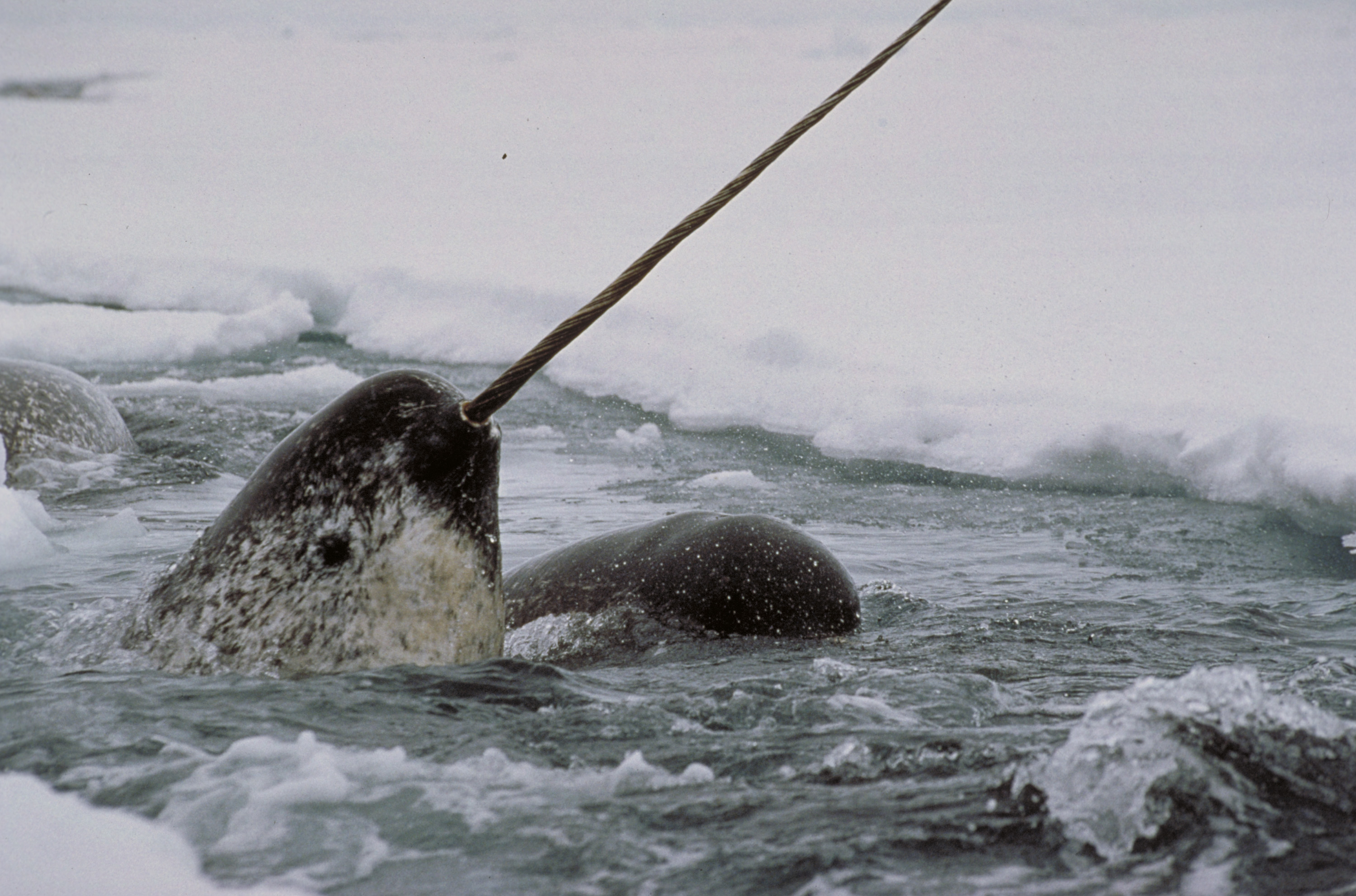“Unicorn of the Sea”—the Narwhal—Explored in Smithsonian Traveling Exhibition
From their depiction in the 1500s as angry sea monsters to their status as icons of pop culture today, the narwhal with its unique spiral tusk has inspired legend in Inuit and European society and fascinated people across cultures for centuries. This mysterious animal and its changing ecosystem are explored in the Smithsonian traveling exhibition “Narwhal: Revealing an Arctic Legend.” The exhibition will begin a national tour at the Sam Noble Oklahoma Museum of Natural History at the University of Oklahoma in Norman March 28, 2020, through June 14, 2020.
Narwhals are medium-sized whales ranging from 13 to 18 feet long, not including the long tusk seen on most males, which averages about 6 to 8 feet. This distinctive spire is not a horn but a long, spiraled tooth that pierces the upper lip. Narwhals only live near the Arctic Circle—in the icy waters spanning Northern Canada, Greenland and Russia—where changes in climate and sea ice pose a mounting challenge to their survival.
Developed by the Smithsonian’s National Museum of Natural History and its Arctic Studies Center and organized for travel by the Smithsonian Institution Traveling Exhibition Service (SITES), the exhibition explores interdisciplinary research conducted about the narwhal by Smithsonian scientists in collaboration with Arctic researchers and members of Inuit communities about the narwhal in their rapidly changing Arctic environment. The exhibition uses firsthand accounts from these scientists and Inuit community members to reveal how traditional knowledge and experience, coupled with scientific research, heighten the understanding of narwhals and the changing global climate.
“The narwhal gives us unique insight into the changing arctic and inspires us to preserve and protect its environment, cultures and creatures,” said William Fitzhugh, curator of the exhibition and director of the Arctic Studies Center.”
Featuring a 16-foot, life-size model of a male narwhal, the exhibition examines “the unicorn of the sea.” Visitors will learn what the narwhal tusk is for, test their tooth knowledge, examine a cast of a skull from a prehistoric narwhal relative and compare the different ways that narwhals and their whale relatives have adapted to the Arctic environment. Panoramic images of landscapes and a soundscape of narwhal vocalizations, ice and water flows and other Arctic wildlife will immerse visitors in the Arctic environment of the narwhal.
The exhibition highlights how the narwhal and its tusk have inspired medieval European unicorn imagery and legend. Visitors can read the Inuit legend of the narwhal, illustrated by artwork from Inuit community members. Much of what is known about narwhal behavior comes from observations collected by the Inuit over generations. Audiences will learn what the Inuit have learned and how environmental changes are affecting the way of life for both narwhal and Inuit.
An exhibition catalog of the same name allows readers to explore new research on the narwhal and its biology, history and cultural and climate connections.
The Smithsonian’s National Museum of Natural History is connecting people everywhere with Earth’s unfolding story. The museum is one of the most visited natural history museums in the world. Opened in 1910, the museum is dedicated to maintaining and preserving the world’s most extensive collection of natural history specimens and human artifacts. Its Arctic Studies Center conducts research on Arctic peoples, cultures and environments throughout the circumpolar region. For more information, visit the museum’s website.
SITES has been sharing the wealth of Smithsonian collections and research programs with millions of people outside Washington, D.C., for more than 65 years. SITES connects Americans to their shared cultural heritage through a wide range of exhibitions about art, science and history, which are shown wherever people live, work and play. For more information, including exhibition descriptions and tour schedules, visit sites.si.edu.
# # #
SI-472-2019

